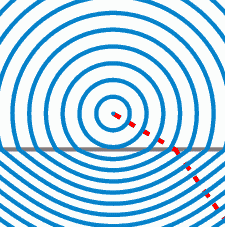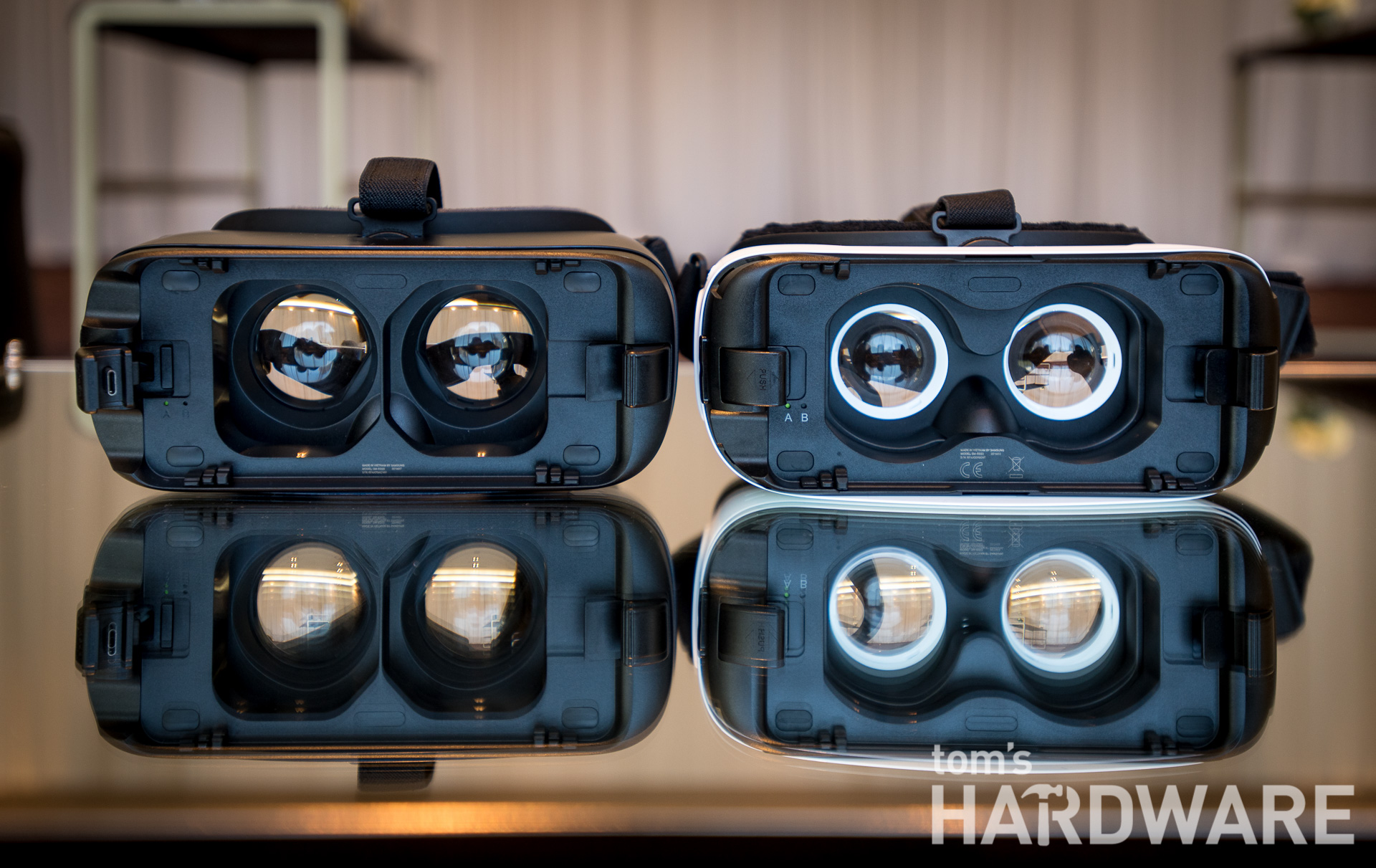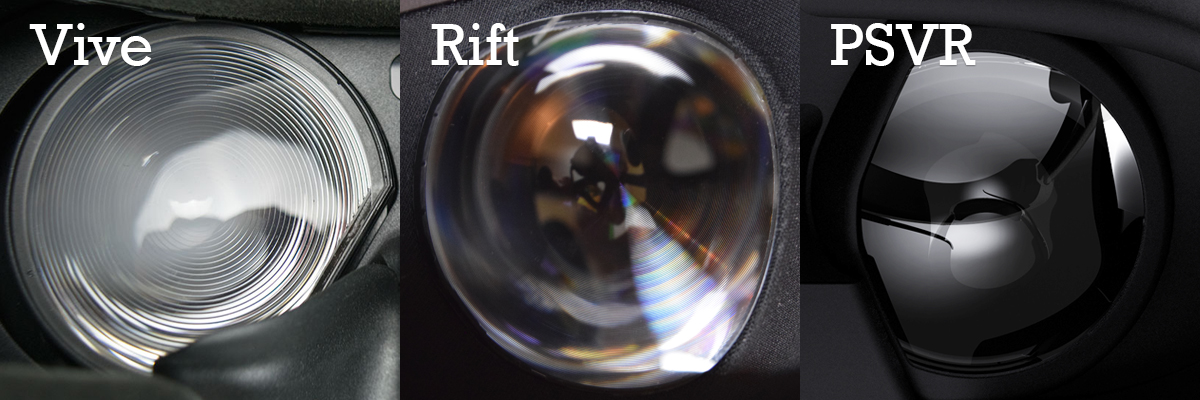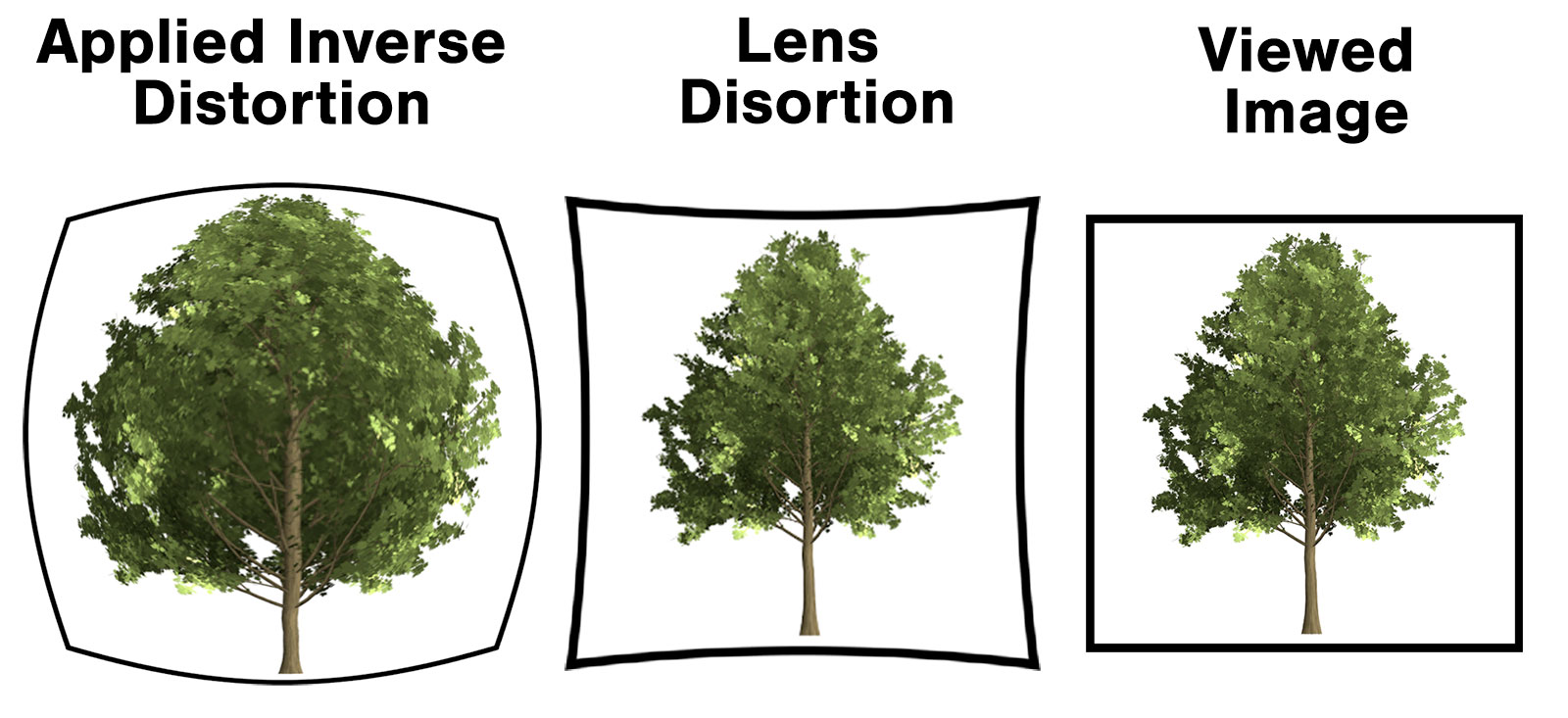VR Lens Basics: Present And Future
Inside any VR headset today, inside the roundish lightblocking goggle set, you’ll find two things: a screen that displays the virtual world you’ll be seeing, and a set of lenses in front of that screen. Much attention has been paid to the display part--technology that’s familiar to many tech enthusiasts. What resolution is it? What’s the refresh rate, and the contrast ratio, and so on? But just as important are the lenses in front of that screen.
So just why are the lenses such an important component of VR headsets, and how do they affect the quality of the VR experience?
Lens Basics
Lenses have been around for millennia, and the basic principles behind them are simple to observe. Take an ordinary piece of glass; you’ll notice the view through it is distorted. The glass (or water, or given translucent material) bends the light coming through it. Build a shape out of the given material to bend the light in the way you want, and you have a lens.
Snell’s Law describes the physics behind all of this. Instead of showing you a huge formula, here are the relevant terms for the equation so you know what we’re looking at when it comes to a lens’ properties:
The first property is known as the refractive index, which tells you how much a given material can bend the light that enters it. This effect happens because light slows down as it enters the material, and the more it slows down, the more it bends. Common examples include air, which is only slightly refractive, to (in increasing refractive index) water, plastic, and glass.
The other properties are the angle of the material versus the angle the light strikes it, which is to say the light bends depending on 1) where it’s coming from and the shape of the lens, 2) the time it takes from entering the lens to exiting the lens, or rather how thick the lens is, and 3) the wavelength (color) of the light.
A final factor is the presence of unwanted artifacts, or aberrations, in a lens. A prism, as you might have intuited from above, is just another type of lens. And just like a prism, a lens will separate colors from each other as the light bends. This is known as chromatic aberration.
Get Tom's Hardware's best news and in-depth reviews, straight to your inbox.
There are other aberrations to be concerned about. Spherical aberration causes different parts of an image to be focused at different points, meaning if you want the center of your image sharp and clear, the edges will become progressively blurry. The center of your eye/camera is at F a, b, or c, so you choose which area is in focus.
Finally, there’s barrel and pincushion distortion, which is often found when lenses try to correct for the above two distortions, and when trying to produce a wide field of view. These cause the final image of, say, a straight grid of lines to be either stretched or pinched.
Lenses And VR
When it comes to lenses and how they affect VR HMDs, the first thing to consider is the size of the display. The larger a VR headset’s display is, the more of your view it will take up, and the wider the field of view will be. But if the display is too large, it can be too heavy and unwieldy. From that perspective, the smaller you can make the display, the better.
A companion solution to the weight and size issue is simply putting the screen closer to your eyes. This has two advantages. First, you won’t need a bigger display to get a wider field of view. Second, thanks to Archimedes and his lever law, the closer to your face the display is, the less force it applies, regardless of weight. Unfortunately human eyes can’t comfortably focus on something too close, limiting the distance at which you can put an HMD’s display.
This presents a problem. Our normal view of the world stretches over a 180°. For reference, a modern HMD’s screen might stretch about 7” (18cm) in diagonal, and even put as close as comfortably possible, this screen will fill relatively little of your field of view. The result would be trying to see your virtual world through a very narrow view, like trying to navigate the real world with a pair of blinders on.
The solution to some of this is to put a lens, or series of lenses, between your face and the display. The goal is to bend the light and give you a wider field of view, using what are essentially magnifying glass lenses, than what you could get with your naked eyes. You could even move the screen to what would normally be uncomfortably close to your eyes, but with the right lens(es), the view would be perfectly comfortable.
But when you introduce lenses and try to turn a small field of view into a wider one, you introduce new problems vis-a-vis the aforementioned aberrations. Camera lenses solve this with a complex stack of lenses that combine their distortions to attempt, at least, to cancel out all the aberrations and give you a clean, undistorted photo. Unfortunately, all of these lenses add weight, length, and quite a bit of cost, as any photographer can tell you.
The answer to this, at the moment, is to use a Fresnel lens, which is used in the HTC Vive, Oculus Rift, and other HMDs. Instead of a smooth shape, a Fresnel lens is relatively thin and has a series of concentric rings carved into it, which is designed to bend rays of light differently depending on what part of the lens they hit. This, if designed correctly, can help overcome the aberrations encountered in using just a single lens (or in the case of an HMD, a pair of lenses). Thus, you don’t need a stack of lenses as you would with a camera.
Unfortunately, again, this does not solve all problems. Although Fresnel lenses offer up a wide field of view, sans most chromatic aberration in a single lens, they don’t overcome the problem of barrel or pincushion distortions.
For modern HMDs, the solution presently in use is a software trick; you have to pre-warp the image in the inverse of the distortion the lens produces, resulting in a (near) correct image once viewed. For example, if you’re going to get a pincushion effect, you have to pre-warp the image with a barrel distortion, and vice versa.
And there you have it, a wide field of view with something like a correct image, all from a much smaller screen placed in front of your face, with the image running through a lens.
The Near And Further Future
The current solutions to lenses and VR HMDs are, then, clever but lacking. So what do future solutions hold? There are several answers depending on exactly what time frame you’re looking at, but one answer to the nearest future once again revolves around the word “unfortunately.”
Because, unfortunately, Fresnel lenses do not solve all problems, as we’ve stated. Not only does the requirement of a pre-warped image dedicate more resolution to the center of your virtual view and less to the edges, a problem in the already too low resolution world of VR, but Fresnel lenses do not in and of themselves produce a perfectly focused image. This is why cameras use expensive stacks of lenses instead of a single Fresnel lens; even the image in today’s low-res VR headsets become blurred by the Fresnel lenses they use. It’s even worse at higher resolutions.
Fortunately. different lens designs, from a variety of different companies, look to solve this last issue (and more). Improved VR Fresnel lens designs have shown up from Valve, and others, all offering things like better focus and thus better effective resolution, and better magnification that lets headset designers put the display ever closer to the wearer’s eyes and enables smaller, thinner, and lighter lenses to begin with.
And the further future? At some point in the hopefully not too distant future, the expectation is that traditional lenses could be replaced altogether by a new class of material known as a “metamaterial”. That’s a general term that simply refers to a material with engineered properties not found in nature. One of the most popular uses for metamaterials is bending light in incredibly tightly controlled ways.
The idea behind optical metamaterials is to bend light using regular structures so tiny that they’re smaller than the wavelength they’re bending. These tiny pillars rely on the quantum mechanical feature of light acting like a wave when not being “measured” (hitting or interacting directly with something) to steer the waves in the desired direction.
Consequently, a single metamaterial lens could, in theory, end up with little to no aberration, be just as sharp as one needs, and do so in incredibly thin and light packages. Unfortunately, yet again, the engineering behind this is rather tricky, as optical wavelength of light are on the nanometer scale, and thus the effective elements of a metamaterial “lens” also need to be that small.
Fortunately (it’s good to see that word appear finally), there’s currently quite a bit of engineering experience building tiny structures on the nanometer scale. All of which means we could end up seeing these vastly improved lenses coming to the consumer market sooner rather than later.
-
Sakkura The Oculus Rift doesn't just use a Fresnel lens, it uses a regular lens and a Fresnel lens fused together into a single hybrid lens.Reply -
Sakkura Reply20546223 said:Which technically means it still uses a Fresnel lens
The article goes on to state how just a single Fresnel lens on its own has drawbacks, so it's worth making the distinction. -
proofvrlab Google's new Daydream view switched to Fresnel lenses, big improvement in FOV, clarity and larger sweetspot. Unfortunately they exhibit very noticeable artifact (godrays) evident in high contrast scenes and many YouTube VR/360 videos.Reply
Switching from 'old' Daydream view to 'new' Daydream view demonstrates this phenomenon...tricky to solve. And the artifact are very different to Vive and Rift as they have their own characteristics due to lens design. -
wifiburger so nice of you to highlight a huge flaw in those VR headset ! the garbage lens they use !Reply
a good lense alone is more then the VR headset -
DerekA_C then they should make holographic head unites not like Microsoft but actual projections within the head unit since the head unites are pretty big there is room for it particularly in a hmd like pimax that thing is monstrous.Reply -
proofvrlab @wifiburger.Reply
I'd prefer non Fresnel lenses, the extra weight of an HMD using thicker regular lens can be easily offset by a HMD harness design which puts a balanced weight load onto the skull (Sony PSVR) rather than strapping against the cheekbones and orbits (Vive/Rift/Daydream). -
bit_user Reply
Lightfield displays are pretty much the ultimate, and what can be casually considered a holographic display. Magic Leap has burned through nearly $2B developing & refining the technology.20547374 said:then they should make holographic head unites not like Microsoft but actual projections within the head unit
https://www.technologyreview.com/s/609821/magic-leap-says-it-will-release-its-ar-headset-next-year/
These types of displays aren't new. They're just really expensive, and take tremendous amounts of compute power to drive.



